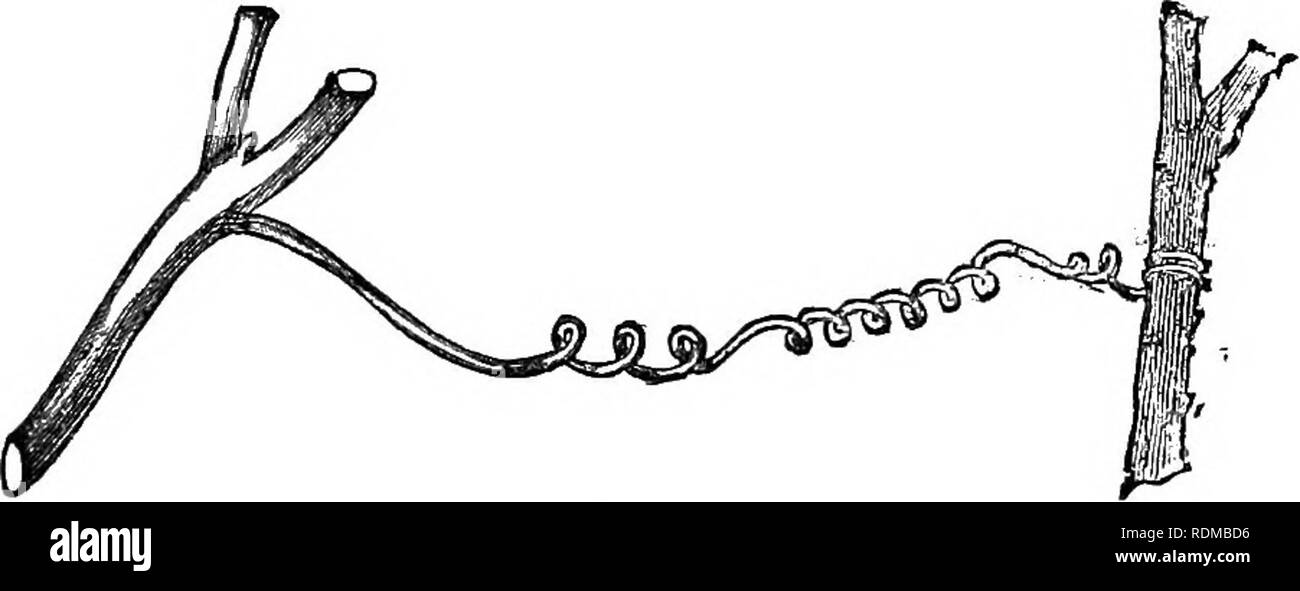. The movements and habits of climbing plants. Climbing plants; Plants. Chap. IV. SPIRAL CONTEACTION. 165 and symmetrical structure has been noticed by several botanists, but has not been sufficiently explained.* It occurs without exception with all tendrils which after catching an object contract spirally, but is of course most conspicuous in the longer tendrils. It never occurs with uncaught tendrils; and when this appears to have occurred, it will be found that the tendril had originally seized some object and had afterwards been torn free. Commonly, all the spires at one end of an attached

Image details
Contributor:
The Book Worm / Alamy Stock PhotoImage ID:
RDMBD6File size:
7.2 MB (154.1 KB Compressed download)Releases:
Model - no | Property - noDo I need a release?Dimensions:
2545 x 982 px | 21.5 x 8.3 cm | 8.5 x 3.3 inches | 300dpiMore information:
This image is a public domain image, which means either that copyright has expired in the image or the copyright holder has waived their copyright. Alamy charges you a fee for access to the high resolution copy of the image.
This image could have imperfections as it’s either historical or reportage.
. The movements and habits of climbing plants. Climbing plants; Plants. Chap. IV. SPIRAL CONTEACTION. 165 and symmetrical structure has been noticed by several botanists, but has not been sufficiently explained.* It occurs without exception with all tendrils which after catching an object contract spirally, but is of course most conspicuous in the longer tendrils. It never occurs with uncaught tendrils; and when this appears to have occurred, it will be found that the tendril had originally seized some object and had afterwards been torn free. Commonly, all the spires at one end of an attached tendril run in one direction, and all those at. Fig. 13. A caught tendril of Brycmia dioica, spirally contracted in reversed directions. the other end in the opposite direction, with a single short straight portion in the middle; but I have seen a tendril with the spires alternately turning five times * See M. Isid. L^on in Bull. Soc. Bot. de France, torn. v. 1858, p. 680. Dr. H. de Vriea points out (p. 306) that I have overlooked, in the first edition of this essay, the fqjlowing sentence by Mohl: "After a tendril has caught a support, it begins in some days to wind into a spire, which, since the tendril is made fast at both extremities, must of necessity be in some places to the right, in others to the left." But I am not surprised that this brief sentence, â without any further explanation did not attract my attention.. Please note that these images are extracted from scanned page images that may have been digitally enhanced for readability - coloration and appearance of these illustrations may not perfectly resemble the original work.. Darwin, Charles, 1809-1882. New York, D. Appleton and Co.